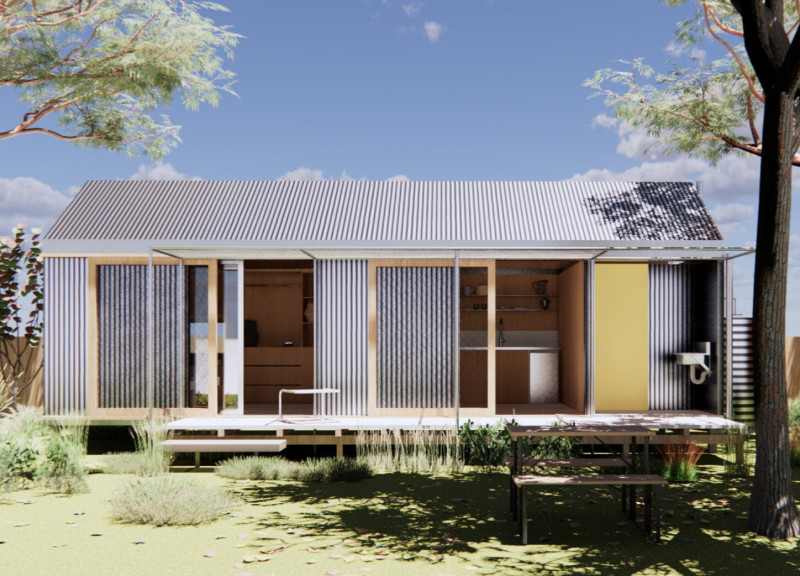5 key facts about this project
The overall structure embodies a balanced composition of form and space, where open areas encourage fluid movement while defined spaces provide privacy and security. The architectural layout is designed with the user experience in mind, incorporating natural light and ventilation to enhance comfort and well-being. Key elements such as large windows and open floor plans facilitate a connection between the indoors and outdoors, making the most of the natural beauty surrounding the building. This design philosophy prioritizes environmental sustainability, emphasizing the project’s commitment to reducing its ecological footprint.
Specific details within this architectural design highlight its uniqueness. The facade, crafted from a combination of materials including high-performance glass and [insert regarding any other materials used, such as steel or wood], creates an inviting appearance while offering energy-efficient properties. The architectural design incorporates shading devices that minimize glare and heat gain, enhancing indoor climate control and reducing energy consumption. Such innovative methods not only contribute to the aesthetic appeal of the structure but also emphasize the importance of sustainability in contemporary architecture.
Inside, the project features versatile spaces that adapt to various functions. Materials selected for the interiors echo the building's commitment to sustainability. [Mention specific interior materials, such as reclaimed wood or polished concrete], help to create an atmosphere that is both functional and aesthetically pleasing, thereby enhancing the overall user experience. The careful arrangement of spaces promotes a sense of community, encouraging collaboration and interaction among users, which is essential in public or shared environments.
Landscaping plays an essential role in the project’s overall design. The consideration of native plant species in establishing the surrounding greenery not only enriches the local ecosystem but also creates visually appealing outdoor areas that can be used for relaxation or social gatherings. Paths and outdoor seating areas are carefully designed to guide movement seamlessly while inviting people to engage with the natural environment.
This architectural project stands as a testament to a thoughtful approach to design that honors both its environmental context and the needs of its users. The use of green roofs, sustainable materials, and energy-efficient systems all align with contemporary architectural ideas aimed at addressing climate and ecological challenges. The integration of these elements demonstrates a commitment to responsible design practices that resonate with today’s expectations for new developments.
In delving deeper into the project presentation, readers are encouraged to explore architectural plans, architectural sections, and architectural designs that further elucidate the project’s key features and design philosophies. The careful consideration of architectural ideas employed throughout the development reinforces not only the functionality of the space but also its aesthetic integrity. Engaging with these elements offers a clearer understanding of how the design serves its intended purpose while contributing to the community and the environment.


























